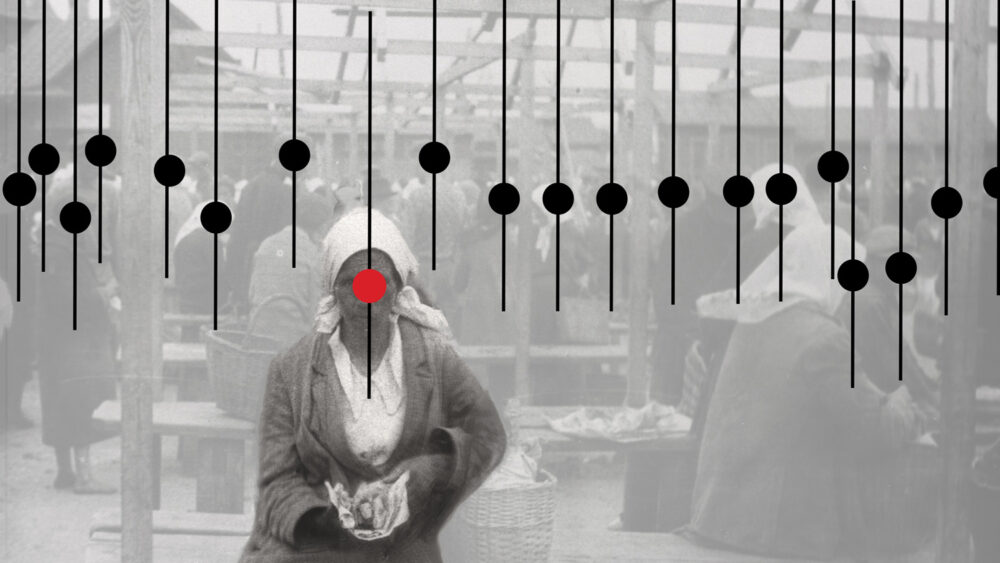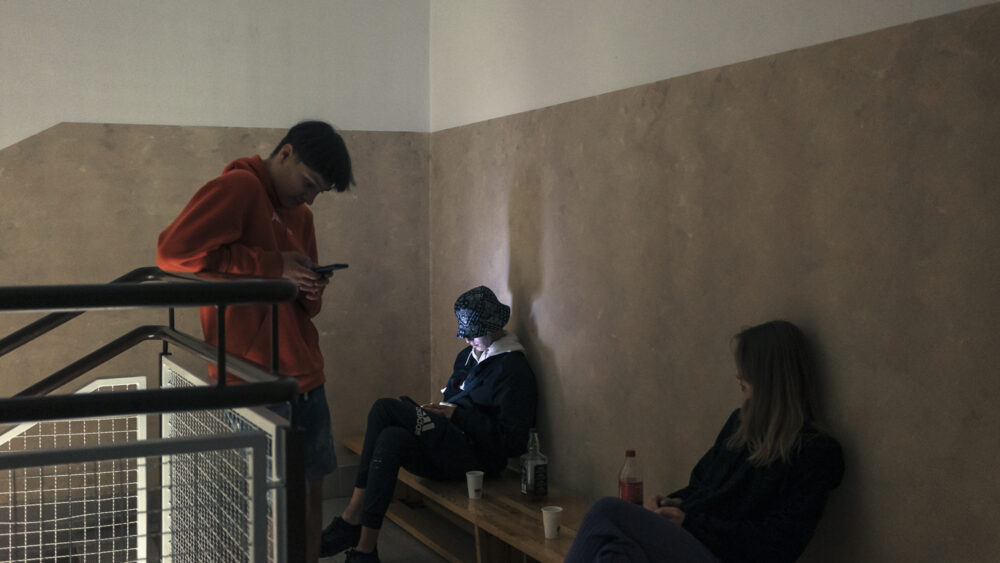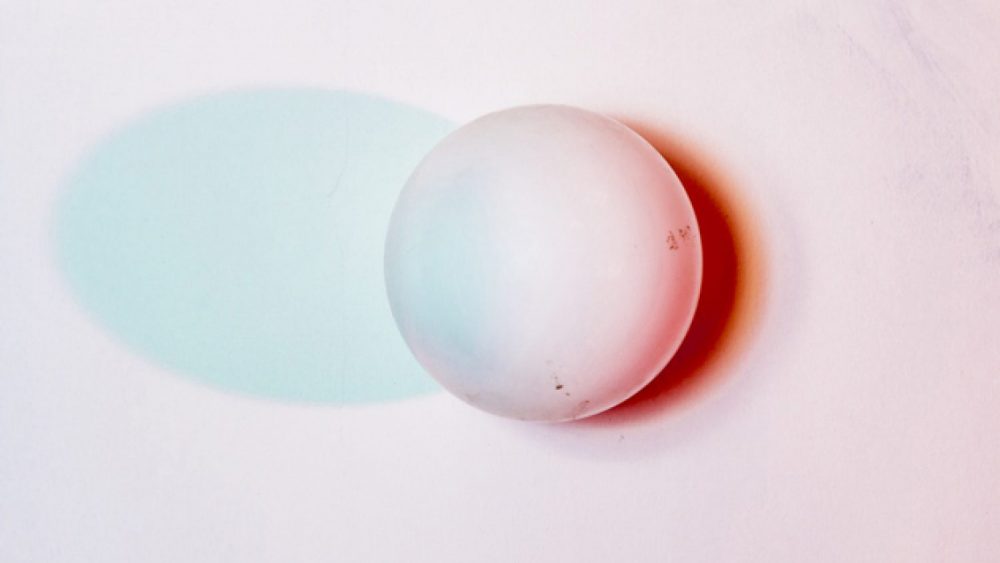How has the war in Ukraine affected the world of photography?
Tadas Kazakevičius, photographer, Lithuania:
I think like every war, it makes a lot of people to rethink the form and meaning of photography. But all in all, I think the photography world has been an effective channel for supporting Ukraine. Especially here, in Lithuania, there have been a lot of initiatives in photography and the art scene in general.
Sergiy Lebedynskyy, photographer, director of the Museum of Kharkiv School of Photography, Ukraine/Germany:
From the point of view of our institution, the Museum of the Kharkiv School of Photography, it has been a very difficult year. We were supposed to open in September 2022 and were working on the exhibition programme. Instead, we had to evacuate our collection and archives of artists from Kharkiv. In total, we saved over 2000 kg of photographs and negatives. I’m incredibly thankful to everyone who helped and worked on evacuation during the shelling of the city. In my opinion, any exhibiting activity inside our country does not make much sense at the moment, as a lot of people are struggling and exposed to danger on an everyday basis. We continue doing research and working on book projects from abroad and taking care of the evacuated archives. I admire the work of Katharina Radchenko, the director of Odessa Photo Days festival. Since the very beginning of war, she has been representing Ukrainian photography to European audience and talking about the events in Ukraine along with the artists. It is very important, as we need a lot of support to withstand this terrorist aggression.
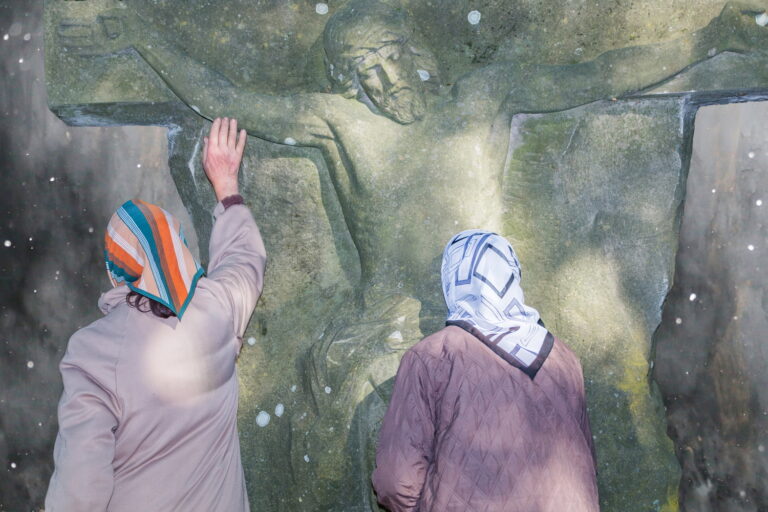
Markéta Kinterová, editor of Fotograf Magazine, Czech Republic:
First, stop the war. Second, stop fake news, because its existence encourages war. How does this state of affairs affect art? By a stronger emphasis not on the artwork itself and its purely aesthetic qualities, but on the whole range of contexts that surround it – the meaning and its impact on society, the identity of the artist, the moral aspect of that identity, the moral aspect of the message of the work, and so on. On the other hand, being part of the Eastern Bloc, we also have the experience of a totalitarian past where we feel that one-sided condemnation and moralising can also be dangerous. For example, can we clearly exclude artists of Russian origin from the art world? The current situation poses many difficult questions.
I think that the position of art in society no longer solves the artistic question of “how to impress the world” as it did, for example in the 1990s, but “how to report on the world”, and I find that very interesting.
Andrew Miksys, photographer, Lithuania/USA:
I think it’s important for photographers to show the brutality of the war in Ukraine. There needs to be a record of all the crimes committed by Russia. But, personally, I wouldn’t go to Ukraine to photograph the war. Photography seems secondary to the actions people are taking to volunteer, raise money for Ukraine, weapons, food, or whatever.
Kati Kivinen, head of exhibitions at HAM, Helsinki:
This year the war has brough despair and violence strongly visible in the media – the imagery of war and its effects on Ukrainian people in media has been more point-blank and violent than before, at least in my own opinion. Still, I guess for me the most powerful impact was made by the paintings of Ukrainian artist Lesia Khomenko, depicting people in the war and people whose lives have been affected. Lesia’s paintings are based on photographs. She portrays people who are now fighting for the independence of Ukraine in life-size, like her husband Max who has been depicted in the series Max in the Army (2022).
(https://new.pinchukartcentre.org/thisisukraine-en)
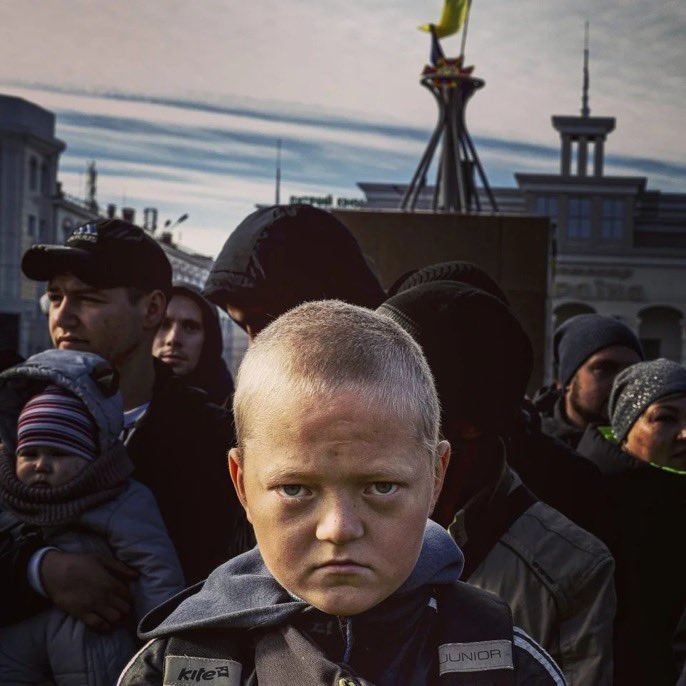
István Virágvölgyi, curator at Robert Capa Centre, Hungary:
András D Hajdu’s image showing a 13-year-old boy in the recently liberated eastern Ukrainian city of Kherson got viral after it was shared by the Ministry of Defence in Ukraine. Many were reminded by the picture of the lead child actor of the movie Come and See which is ironically enough a Soviet anti-war film from 1985 directed by Elem Klimov.
The job of a photojournalist is obviously to take good pictures in any situation, and it is good for the publicity of the picture if it is published by powerful media outlets and wins prizes. However, it is difficult to draw the line from where the photographer builds their own career by aestheticising the suffering of others. Should photojournalists be seen by Ukrainians as a mouthpiece for their plight to the world or a media worker profiting from their misfortune hungry for success? Nevertheless, Hajdú’s dramatic photograph does have the quality of becoming iconic and condensing the emotions of many into a single frame, and thus it tells us a story in a compellingly simple way that can possibly affect people.
Branislav Stepanek, curator, photographer, Slovakia:
The Ukrainian war reportage includes many shocking photographs and helps uncover the horrors of war. At the same time, a need for a responsible visual journalism is even more apparent. It is clear that the conflicting parties often use photography (and video) for propaganda, which is, on the one hand, understandable during the war, but on the other hand, it helps spread the “alternative cultures” based on hoaxes and conspiracies. But the same principle also rules “ordinary” photography, spread via social networks and media. In a globalized, interconnected visual imagery of the world, the major challenge that needs to be addressed is a quest for sincerity.
Grzegorz Jarmocewicz, director of Interphoto festival, Poland:
Russia’s military onslaught on Ukraine is changing the visual perspective of our world on a daily basis. I’m not just talking about the tremendous support of Ukrainian artists through already prepared and still being prepared presentations of photographic projects in many countries of Europe and the world. The images of human suffering coming from Ukraine, on the one hand, shock with the pain emanating from them, but also unite people unaffected by the war for community action. Of course, conflicts and disasters elsewhere on earth have not suddenly ended. However, Europe has not been in such immediate danger since the Balkan War. I would even dare to say that today’s conflict has a stronger impact on our imagination, not to mention physical contact with the effects of this war. Interestingly, and in my opinion, appropriately, the entry of Russian or even Belarusian photography (this does not apply to opposition artists) into the salons of Europe is being denied more and more loudly and clearly.
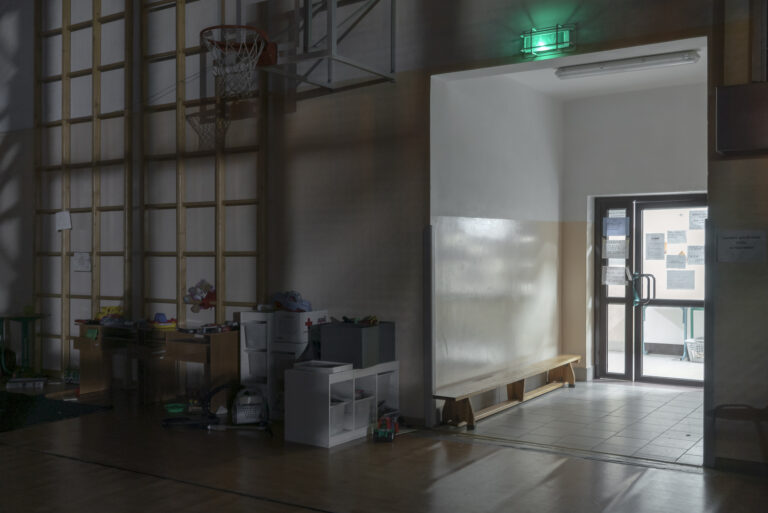
Alise Tīfentāle, art critic, Latvia/USA:
While there have been reasonable efforts to think about war photography in the context of Capa, Barthes, and Sontag (like in this article https://www.washingtonpost.com/arts-entertainment/2022/04/08/ukraine-war-photography/), I’m more inclined to look in the direction of Martha Rosler’s project The Bowery in two inadequate descriptive systems (1974–75). The Capa-style war photography today is one example of an inadequate descriptive system. Yes, I can see that it is necessary, perhaps because we do not have a better “descriptive system,” or because photojournalists will tell you that “it’s really important for the international community to see what’s happening” (interview with photojournalist Lynsey Addario, https://www.nytimes.com/2022/03/23/insider/photographing-the-reality-of-war.html). That “seeing,” however, is problematic and requires more critical scrutiny.
Arnis Balčus, photographer, editor of FK Magazine, Latvia:
First of all, the war has changed the photography of Ukraine itself, that is, its visibility. Apart from Boris Mikhailov, Ukrainian photography was something marginal on the global map before the war, but the war has drawn attention to it and now it is hard to imagine major photo events without it. A good question is whether this interest will decrease after the war or whether the Ukrainians will have won their place on the map. Interest in Russian photography has decreased and due to travel ban we also see less Russians at fairs and exhibitions, but unlike sports, Russian culture, including photography, is not disqualified, exhibitions at a lesser scale are held in Europe, Russian photographers participate in competitions, etc., and some Russian cultural workers are starting to take positions in Western European organizations, and it will be interesting to watch how this will affect their agenda in the long term.
Rafal Milach, photographer, Poland:
As someone from Eastern Europe, I cannot think of any other factor that has been as dominant in 2022, not only in terms of photography, but also in a wider context where photography has been used to advocate for human rights, create important testimonials, give a voice to communities, and serve as a tool in the information war. I am glad that Ukrainian photographers have gained so much recognition on the international scene, and I hope that this is not just a short-term trend related to war. There are many talented photographers who deserve worldwide attention.
Maria Kapajeva, artist, Estonia:
I don’t think the war has affected photography somehow differently than any other fields of practice and work. The war has affected everything including photography. Of course, through photography, as the most accessible medium for many people, the war came right to everyone’s living rooms, daily phone browsing and reading news. Due to photography and video, involuntarily we all have become witnesses of the terror and it has affected all of us. It has brought to many of us more anxiety and stress, but it has also allowed to document all the terror, perpetuated by Russia in Ukraine. But, let me remind Susan Sontag’s words in her book Regarding the Pain of Others: “Compassion is an unstable emotion. It needs to be translated into action, or it withers. The question is what to do with the feelings that have been aroused, the knowledge that has been communicated. If one feels that there is nothing “we” can do—but who is that “we”?—and nothing “they” can do either—and who are “they”?—then one starts to get bored, cynical, apathetic”. So, I hope photography continues to call for action: to help, to support, to donate, to care.
Cover photo – Volodymyr Petrov, Ukraine

